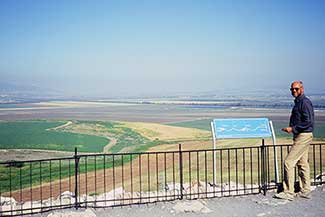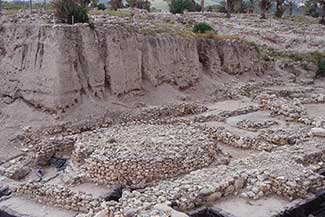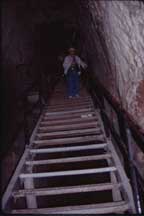 Megiddo (Armageddon)
Megiddo (Armageddon)
Tel Megiddo overlooks the Jezreel Valley, the plains of Armageddon. This is the site of 28 key battles in history, in part because it is near the Via Maris, the main route from Egypt to the Euphrates. Countless invading armies have marched through here. The word Armageddon is Greek for "Har Megiddo", meaning "mountain Megiddo." It is mentioned in Revelation 16:16 as the site of the last great battle in earth's future.
 Megiddo was a Canaanite city. An altar to Astarte is one of the big attractions. The altar is a round platform about 1.5 meters high, made of stone. Animal bones found there indicate it was a place of sacrifice. Canaanites continued to live in Megiddo even after the tribe of Manasseh conquered it (2 Chronicles 7:29). The Canaanites had chariots and were militarily superior to the Israelites, who generally lived in the hill country.
Megiddo was a Canaanite city. An altar to Astarte is one of the big attractions. The altar is a round platform about 1.5 meters high, made of stone. Animal bones found there indicate it was a place of sacrifice. Canaanites continued to live in Megiddo even after the tribe of Manasseh conquered it (2 Chronicles 7:29). The Canaanites had chariots and were militarily superior to the Israelites, who generally lived in the hill country.
James Michener wrote a book about Megiddo, The Source. There are at least 20 distinct cities and historical periods represented, according to archeologists.  Two of the most impressive date to the times of King Ahab and King Solomon.
Two of the most impressive date to the times of King Ahab and King Solomon.
The title The Source refers to the source of water. Besieged cities would often be forced to surrender because of lack of water. King Ahab built an impressive waterworks in the 9th century B.C. so that people could get to the spring without leaving the protection of the city walls. He sank a shaft through rock to a depth of 120 feet and then carved a tunnel 215 feet long to a source of fresh, clean water. The outside entrance was well camouflaged to keep enemies from discovering the water and the secret entrance to the city.
Go on to read about Caesarea
Source: www.SusanCAnthony.com, ©Susan C. Anthony
